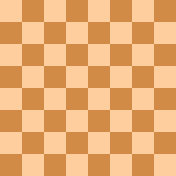chess.wikisort.org - Player
Francisco Vallejo, son of Ángel R. Vallejo Jiménez, military academy graduate in Law, and Felicidad Pons Gomila. He was born in Mahón, where the main hospital on the island of Menorca was located, but he has never lived there, but rather in Es Castell (until 1989 called "Villacarlos"). In the family everyone played chess: his father with his grandfather and his brothers among them, so at the age of 5 he already knew how to play: he had learned by watching them. 2 A family friend, named Nissio, noticed his abilities and without knowing the rules perfectly, he was sent to the Villacarlos Chess School, where first Guillermo Simó, and later Jaume Villalonga and Pep Suárez were his teachers.
| Francisco Vallejo Pons | |
|---|---|
 Vallejo in 2013 | |
| Country | Spain |
| Born | 21 August 1982 Es Castell, Menorca |
| Title | Grandmaster (1999) |
| FIDE rating | 2716 (November 2022) |
| Peak rating | 2724 (July 2011) |
| Ranking | No. 30 (November 2022) |
| Peak ranking | No. 18 (January 2005) |
His first international triumph was in 1991 when he won the title of world under-10 runner-up in Milwaukee. At the age of 11, his life radically changes: he goes to live without his family in Galicia, at the Marcote School in Mondariz-Balneario. There he combined his studies with his chess career and had coaches such as Daniel Pizá, Pablo Glavina, Andrei Kharlov and Zenón Franco Ocampos.
In 1996 he obtained the title of International Master and two years later he became runner-up in Spain behind Miguel Illescas in Linares. Vallejo became a Grand Master in 1999, that is, at the age of 16, which made him the youngest person to receive this title in the history of Spanish chess. At 17 he finished secondary education (University Orientation Course), did the Selectivity and entered the National Institute of Physical Education of Catalonia, attached to the University of Barcelona. Almost immediately after moving to the Residencia Muñoz Grandes to begin his studies, he participated in the 2000 Under-18 World Championship in Oropesa del Mar, which he won.
At the age of 20, he decides to abandon his studies because it was impossible for him to combine them with professional elite chess. Since then he officially resides in Palma de Mallorca. Vallejo was coach of Veselin Topalov in his strategic preparation for the 2006 World Chess Championship, obtaining good victories thanks to it, although they were not enough to retain the title. He has a wide and highly changing opening repertoire. In July 2011 he had 2724 Elo points, which placed him at number 20 of the active players in the FIDE world ranking, and in the first place in Spain, ahead of the Spanish nationalized Latvian Alexei Shirov.3
At the end of March 2018, he withdraws after the fifth round of the European Championship in Batumi, Georgia, overwhelmed by his problems with the Treasury. Despite having losses playing online poker during 2011, the Treasury demands a large sum of money from him; the player can't stand the pressure and decides to tell everything publicly on social networks and national and international press, receiving great media support.
Notable games
On 25 February 2006 he defeated FIDE world champion Veselin Topalov in 56 moves with the black pieces at the SuperGM Linares-Morelia chess tournament.[1]
- Topalov vs. Vallejo
1.d4 d5 2.c4 c6 3.Nc3 Nf6 4.Nf3 e6 5.Bg5 h6 6.Bh4 dxc4 7.e4 g5 8.Bg3 b5 9.Be2 Bb7 10.0-0 Nbd7 11.Ne5 h5 12.Nxd7 Qxd7 13.Be5 Rh6 14.f3 Qe7 15.a4 a6 16.Qc2 Rd8 17.Rad1 Nd7 18.Bc7 Rc8 19.Bg3 e5 20.d5 b4 21.dxc6 Rhxc6 22.Nd5 Qe6 23.Qd2 h4 24.Bf2 - (diagram 1 )
- 24... c3 25.bxc3 bxc3 26.Qxg5 c2 27.Rc1 h3 28.g3 Qh6 29.Qf5 Qd2 30.Rfe1 Ba3 31.f4 Bxc1 32.Bh5 Rg6 33.Bxg6 Bxd5 34.exd5
- (diagram 2 )
- 34... Qxe1+ 35.Bxe1 Be3+ 36.Kf1 c1=Q 37.Qxf7+ Kd8 38.Ke2 Bb6 39.Bd2 Qc4+ 40.Kf3 e4+ 41.Kg4 Kc7 42.a5 Bd4 43.Bf5 Rg8+ 44.Kh4 Rh8+ 45.Kg5 Qb5 46.Be6 e3 47.Be1 e2 48.g4 Rf8 49.Qh7 Be3 50.Kh4 Bxf4 51.g5 Qa4 52.Kh5 Bxh2 53.Bxh3 Be5 54.Qd3 Rh8+ 55.Kg6 Nf8+ 56.Kf7 Kd8 (diagram 3 ) 0–1
diagram 1
Position after 24.Bf2 |
diagram 2
Position after 34.exd5 |
diagram 3
Final position after 56... Kd8 | |||||||||||||||||||||||||||||||||||||||||||||||||||||||||||||||||||||||||||||||||||||||||||||||||||||||||||||||||||||||||||||||||||||
Retirement and return to chess
After a painful loss in his penultimate round against Sergey Karjakin in the 2012 Bilbao Chess Masters Final, Vallejo announced his retirement from competitive chess.[2]
Since then he has made multiple appearances in tournaments, for instance in 2014 Bilbao Chess Masters, as well as competed in country leagues.
Vallejo participated in the Grand Prix cycle for 2017–18, after being active in 2016. Having played in the Sharjah and Moscow legs of the event, and finished in the bottom half of the field in both, he had no mathematical chance to qualify for the 2018 Candidates Tournament via the Grand Prix.
References
- "Super GM Linares-Morelia". ChessBase. Retrieved 2009-07-08.
- "Vallejo Pons retires".
External links
- Official website
- Francisco Vallejo Pons rating card at FIDE
- Francisco Vallejo Pons player profile and games at Chessgames.com
- Francisco Vallejo Pons chess games at 365Chess.com
- Francisco Vallejo Pons player profile at Chess.com
- Francisco Vallejo Pons member profile at the Internet Chess Club
На других языках
[de] Francisco Vallejo Pons
Francisco Vallejo Pons (* 21. August 1982 in Es Castell auf Menorca) ist ein spanischer Schachspieler.- [en] Francisco Vallejo Pons
[es] Francisco Vallejo Pons
Francisco Vallejo Pons (Villacarlos, 21 de agosto de 1982), también conocido como Paco Vallejo, es un ajedrecista de España que ostenta la categoría de Gran Maestro.[ru] Вальехо Понс, Франсиско
Франсиско Валье́хо Понс (исп. Francisco Vallejo Pons; род. 21 августа 1982 (1982-08-21), Вильякарлос, остров Менорка) — испанский шахматист, гроссмейстер (1999).Другой контент может иметь иную лицензию. Перед использованием материалов сайта WikiSort.org внимательно изучите правила лицензирования конкретных элементов наполнения сайта.
WikiSort.org - проект по пересортировке и дополнению контента Википедии
